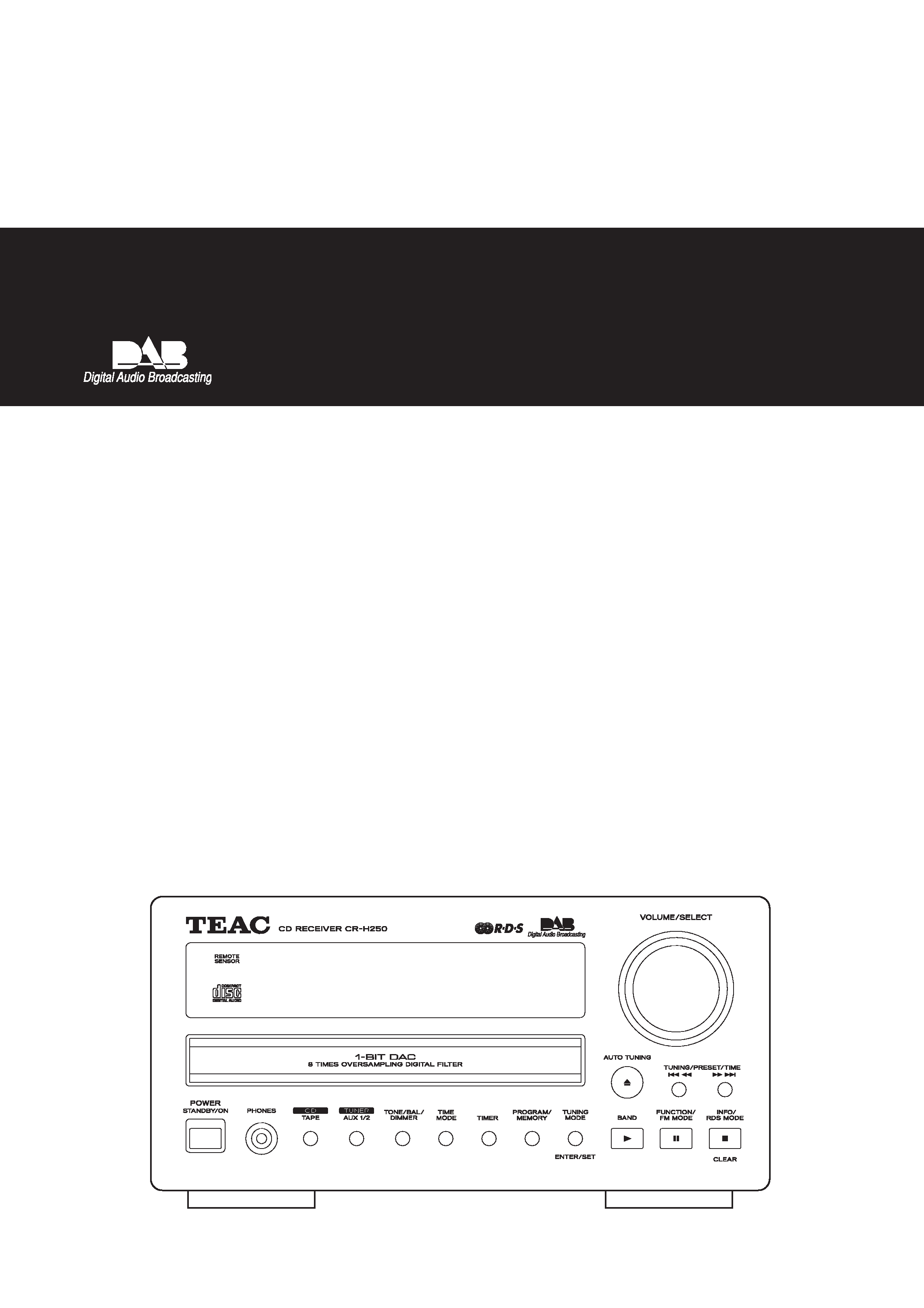
9A10001300
CR-H250
OWNER'S MANUAL
CD/Receiver Micro-System
Z
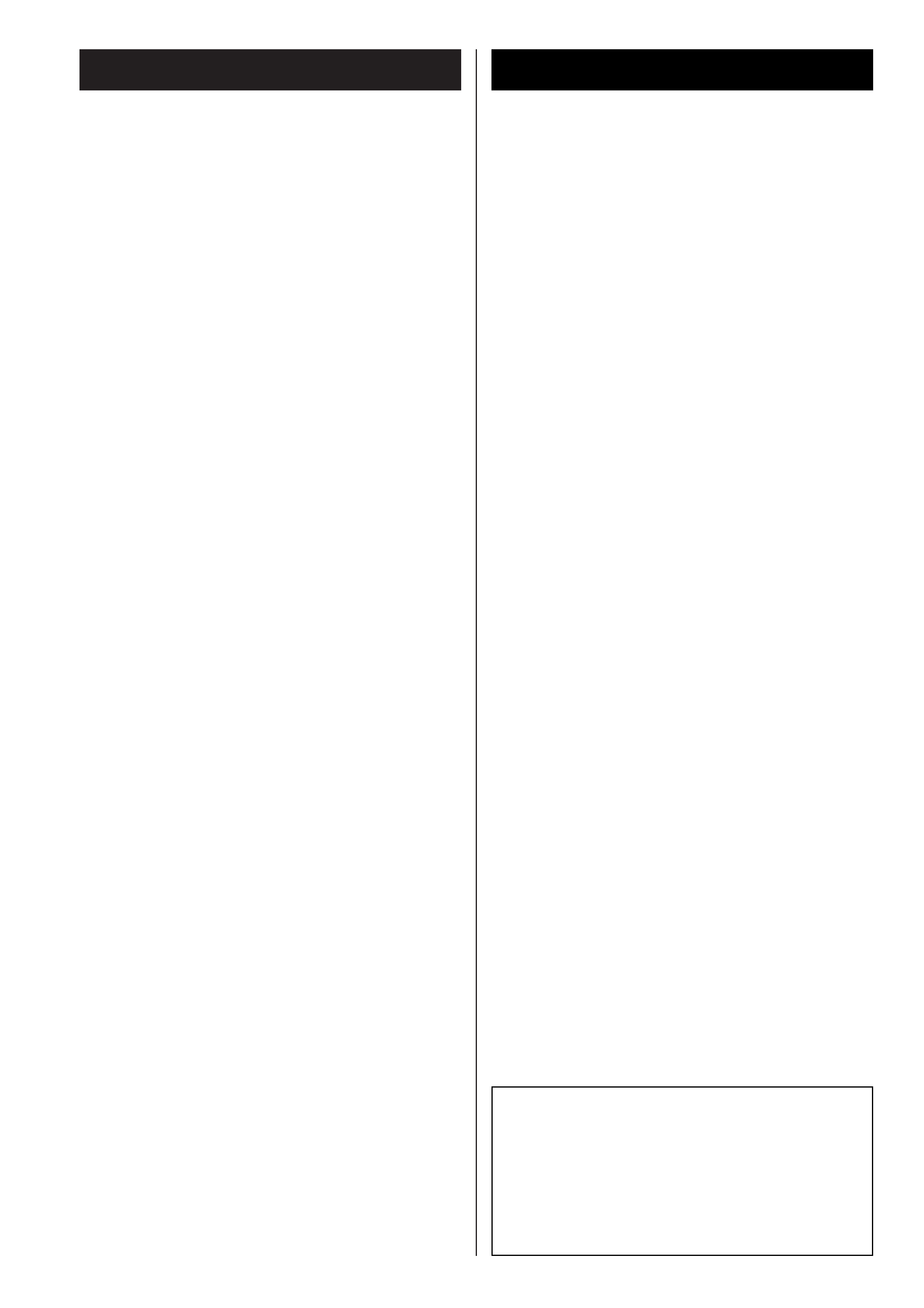
2
Contents
Thanks you for choosing TEAC. Read this manual
carefully to get the best performance from this
unit.
Before Use . . . . . . . . . . . . . . . . . . . . . . . . . . . . . . . . 2
Compact Disc . . . . . . . . . . . . . . . . . . . . . . . . . . . . . . 3
Connections . . . . . . . . . . . . . . . . . . . . . . . . . . . . . . . 4
Connecting Antennas (AM/FM) . . . . . . . . . . . . . . . . . 6
Connecting Antennas (DAB) . . . . . . . . . . . . . . . . . . . 7
Name of Each Control. . . . . . . . . . . . . . . . . . . . . . . . 8
Remote Control Unit . . . . . . . . . . . . . . . . . . . . . . . . 11
Basic Operation. . . . . . . . . . . . . . . . . . . . . . . . . . . . 12
Listening to CDs . . . . . . . . . . . . . . . . . . . . . . . . . . . 14
Programmed Playback. . . . . . . . . . . . . . . . . . . . . . . 16
Shuffle Playback . . . . . . . . . . . . . . . . . . . . . . . . . . . 17
Repeat Playback . . . . . . . . . . . . . . . . . . . . . . . . . . . 18
Time Display . . . . . . . . . . . . . . . . . . . . . . . . . . . . . . 19
Listening to the External Sources . . . . . . . . . . . . . . . 19
Setting up your DAB Tuner . . . . . . . . . . . . . . . . . . . 20
Auto Tuning . . . . . . . . . . . . . . . . . . . . . . . . . . . . . . 20
Using the Channel List . . . . . . . . . . . . . . . . . . . . . . 21
Using Function Control . . . . . . . . . . . . . . . . . . . . . . 22
Station order . . . . . . . . . . . . . . . . . . . . . . . . . . . 22
Sig error rate . . . . . . . . . . . . . . . . . . . . . . . . . . . 23
Preset tune . . . . . . . . . . . . . . . . . . . . . . . . . . . . 24
Sw version. . . . . . . . . . . . . . . . . . . . . . . . . . . . . 24
DRC value . . . . . . . . . . . . . . . . . . . . . . . . . . . . . 25
Manual tune . . . . . . . . . . . . . . . . . . . . . . . . . . . 26
Changing Display Settings. . . . . . . . . . . . . . . . . . . . 27
Listening to FM/AM. . . . . . . . . . . . . . . . . . . . . . . . . 28
Preset Tuning . . . . . . . . . . . . . . . . . . . . . . . . . . . . . 29
RDS. . . . . . . . . . . . . . . . . . . . . . . . . . . . . . . . . . . . . 31
PTY Search . . . . . . . . . . . . . . . . . . . . . . . . . . . . . . . 32
About DAB . . . . . . . . . . . . . . . . . . . . . . . . . . . . . . . 33
Setting the Clock . . . . . . . . . . . . . . . . . . . . . . . . . . 34
Setting the Timer . . . . . . . . . . . . . . . . . . . . . . . . . . 35
Sleep Timer . . . . . . . . . . . . . . . . . . . . . . . . . . . . . . . 36
How to Reset the Settings to the Factory Defaults . . 36
Specifications . . . . . . . . . . . . . . . . . . . . . . . . . . . . . 37
Troubleshooting . . . . . . . . . . . . . . . . . . . . . . . . . . . 38
CAUTION
The product shall not be exposed to dripping or
splashing and that no object filled with liquids, such
as vases, shall be placed on the product.
Do not install this equipment in a confined space
such as a book case or similar unit.
Before Use
Read this before operation
<
As the unit may become warm during operation,
always leave sufficient space around the unit for
ventilation.
<
The voltage supplied to the unit should match the
voltage as printed on the rear panel. If you are in
any doubt regarding this matter, consult an
electrician.
<
Choose the installation location of your unit
carefully. Avoid placing it in direct sunlight or close
to a source of heat. Also avoid locations subject to
vibrations and excessive dust, heat, cold or
moisture.
<
Do not place the unit on an amplifier/receiver.
<
Do not open the cabinet as this might result in
damage to the circuitry or electrical shock. If a
foreign object should get into the set, contact your
dealer or service agency.
<
When removing the power plug from the wall
outlet, always pull directly on the plug, never yank
the cord.
<
To keep the laser pickup clean, do not touch it, and
do not forget to close the disc tray when not using
the CD player.
<
Do not attempt to clean the unit with chemical
solvents as this might damage the finish. Use a
clean, dry cloth.
<
Keep this manual in a safe place for future
reference.
DO NOT MOVE THE UNIT DURING PLAYBACK
During playback, the disc rotates at high speed. Do
NOT lift or move the unit during playback. Doing so
may damage the disc.
WHEN MOVING THIS UNIT
When changing places of installation or packing
the unit for moving, be sure to remove the disc and
return the disc table to its original position in the
player. Then, press the power switch to turn the
power off, and disconnect the power cord. Moving
this unit with the disc loaded may result in damage
to this unit.
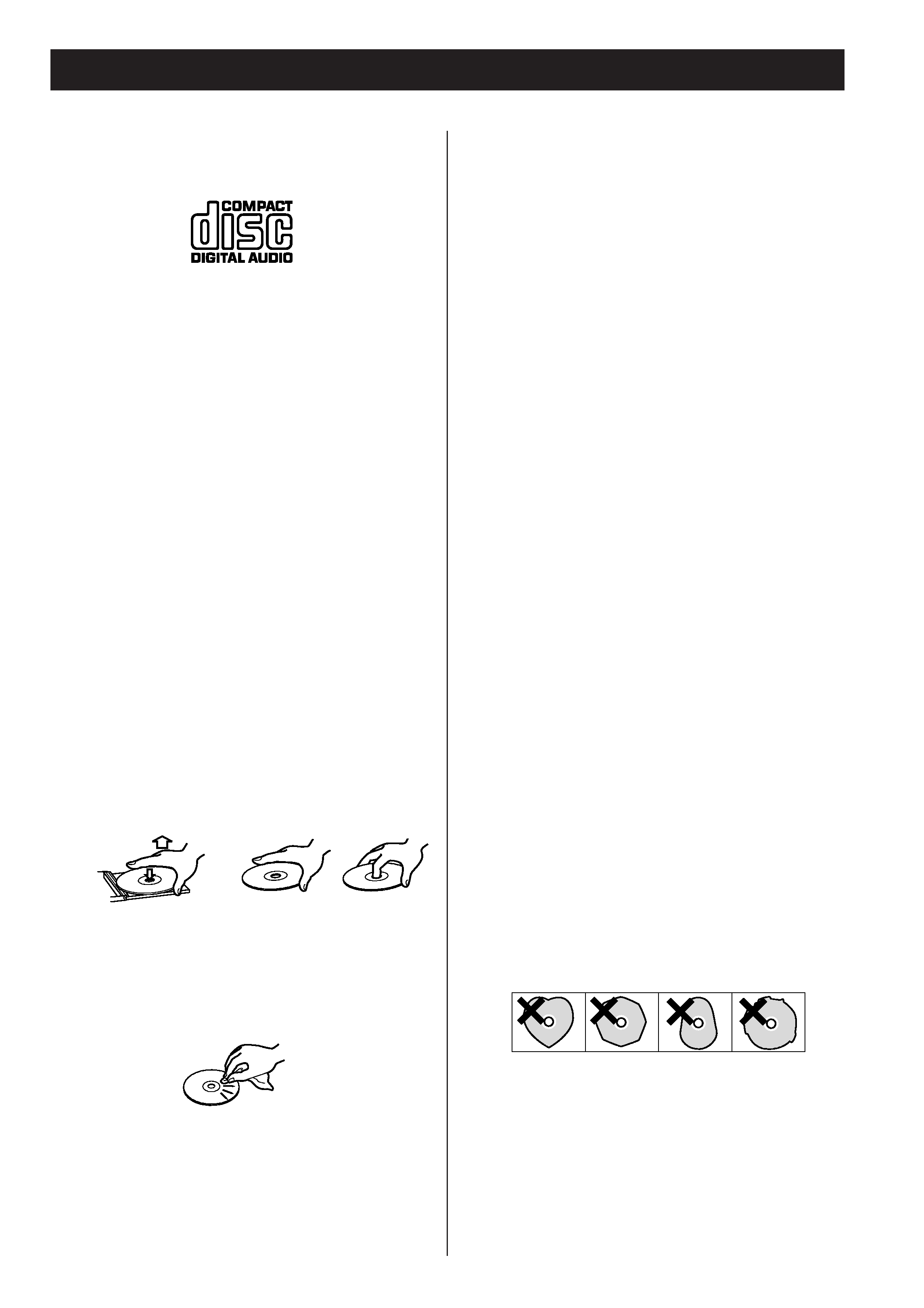
3
Compact Disc
Discs which can be played on this unit:
· Conventional audio CDs bearing the CD-DA logo
on the label:
· Properly finalized CD-R and CD-RW discs
Note:
<
Depending on the quality of the disc and/or the
condition of the recording, some CD-R/CD-RW
discs may not be playable.
<
Copy-protected discs and other discs which do not
conform to the CD standard may not play back
correctly in this player. If you use such discs in this
unit, TEAC Corporation and its subsidiaries cannot
be responsible for any consequences or guarantee
the quality of reproduction. If you experience
problems with such non-standard discs, you should
contact the producers of the disc.
<
Discs should be returned to their cases after use to
avoid dust and scratches that could cause the laser
pickup to `skip'.
<
Do not expose discs to direct sunlight or high
humidity and temperature for extended periods.
Long exposure to high temperatures will warp the
disc.
<
Do not play any disc that is warped, deformed or
damaged. Playing such discs may cause irreparable
harm to the playing mechanisms.
<
CD-R and CD-RW discs are more sensitive to the
effects of heat and ultraviolet rays than ordinary
CDs. It is important that they are not stored in a
location where direct sunlight will fall on them, and
which is away from sources of heat such as
radiators or heat-generating electrical devices.
<
Printable CD-R and CD-RW discs aren't
recommended, as the label side might be sticky and
damage the unit.
<
Do not stick papers or protective sheets on the
discs and do not use any protective coating spray.
<
Use a soft oil-based felt-tipped pen to write the
information on the label side. Never use a ball-point
or hard-tipped pen, as this may cause damage to
the recorded side.
<
Never use a stabilizer. Using commercially available
CD stabilizers with this unit will damage the
mechanisms and cause them to malfunction.
<
Do not use irregular shape CDs (octagonal, heart
shaped, business card size, etc.). CDs of this sort
can damage the unit:
<
If you are in any doubt as to the care and handling
of a CD-R/CD-RW disc, read the precautions
supplied with the disc, or contact the disc
manufacturer directly.
<
Always place the disc on the disc tray with the label
side uppermost. (Compact discs can be played or
recorded only on one side.)
<
To remove a disc from its storage case, press down
on the center of the case and lift the disc out,
holding it carefully by the edges.
How to remove the disc
How to hold the disc
<
Should the disc become dirty, wipe the surface
radially (from the center hole outward towards the
outer edge) with a soft, dry cloth:
<
Never use such chemicals as record sprays,
antistatic sprays or fluid, benzine or thinner to clean
the discs. Such chemicals will do irreparable
damage to the disc's plastic surface.
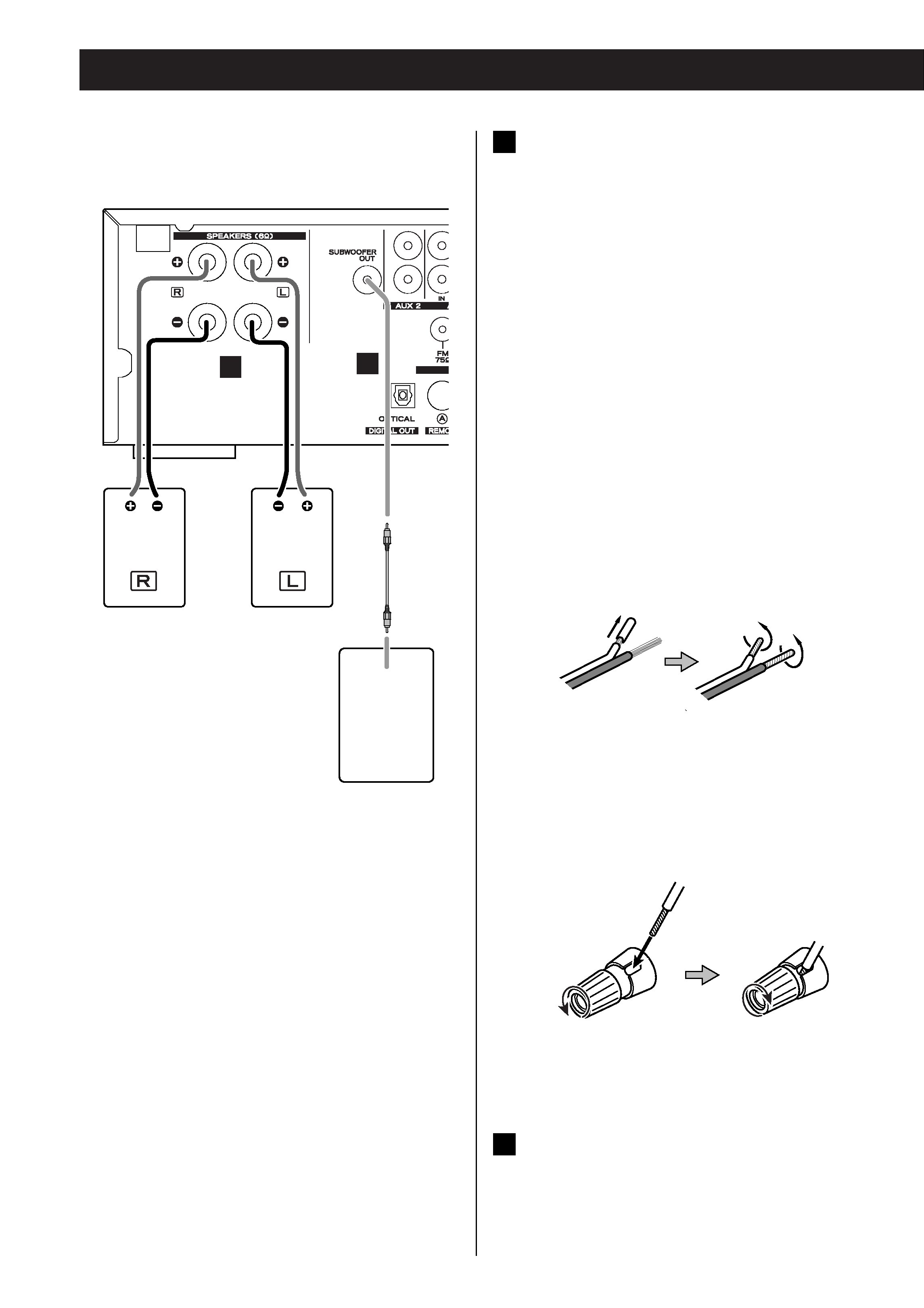
4
Connections
SUBWOOFER
SPEAKER
A
B
LINE
IN
Speaker Connections
Caution:
<
To avoid damaging the speakers by inputting a
sudden high-level signal, be sure to switch the
power off before connecting the speakers.
<
Check the impedance of your speakers. Connect
speaker with an impedance of 6 ohms or more.
<
The amplifier's red speaker terminals are the +
(positive) terminals and the black terminals are the
_
(negative) terminals.
The + side of the speaker cable is marked to
make it distinguishable from the negative side of
the cable. Connect this marked side to the red +
terminal and the unmarked side to the black _
terminal.
<
Prepare the speaker cords for connection by
stripping off approximately 10 mm or less (no
more as this could cause a short-circuit) of the
outer insulation. Twist the wires tightly together
to avoid tangles:
How to connect
1. Turn the terminal cap counterclockwise to loosen
it. The speaker terminal caps cannot be fully
removed from the base.
2. Insert the wire into the terminal fully and turn the
terminal cap clockwise to securely connect it:
3. Make sure it is fastened firm by pulling the cable
lightly.
SUBWOOFER OUT jack
Connect a commercially available powered
subwoofer.
<
Subwoofer output will not be cut off, when the
headphone jack is inserted.
B
A
CAUTION
<
Turn off the power of all the equipment before
making connections.
<
Read instructions of each component you intend
to use with this unit.
<
Be sure to insert each plug securely. To prevent
hum and noise, do not bundle the connection
cords with the power cord or speaker cord.
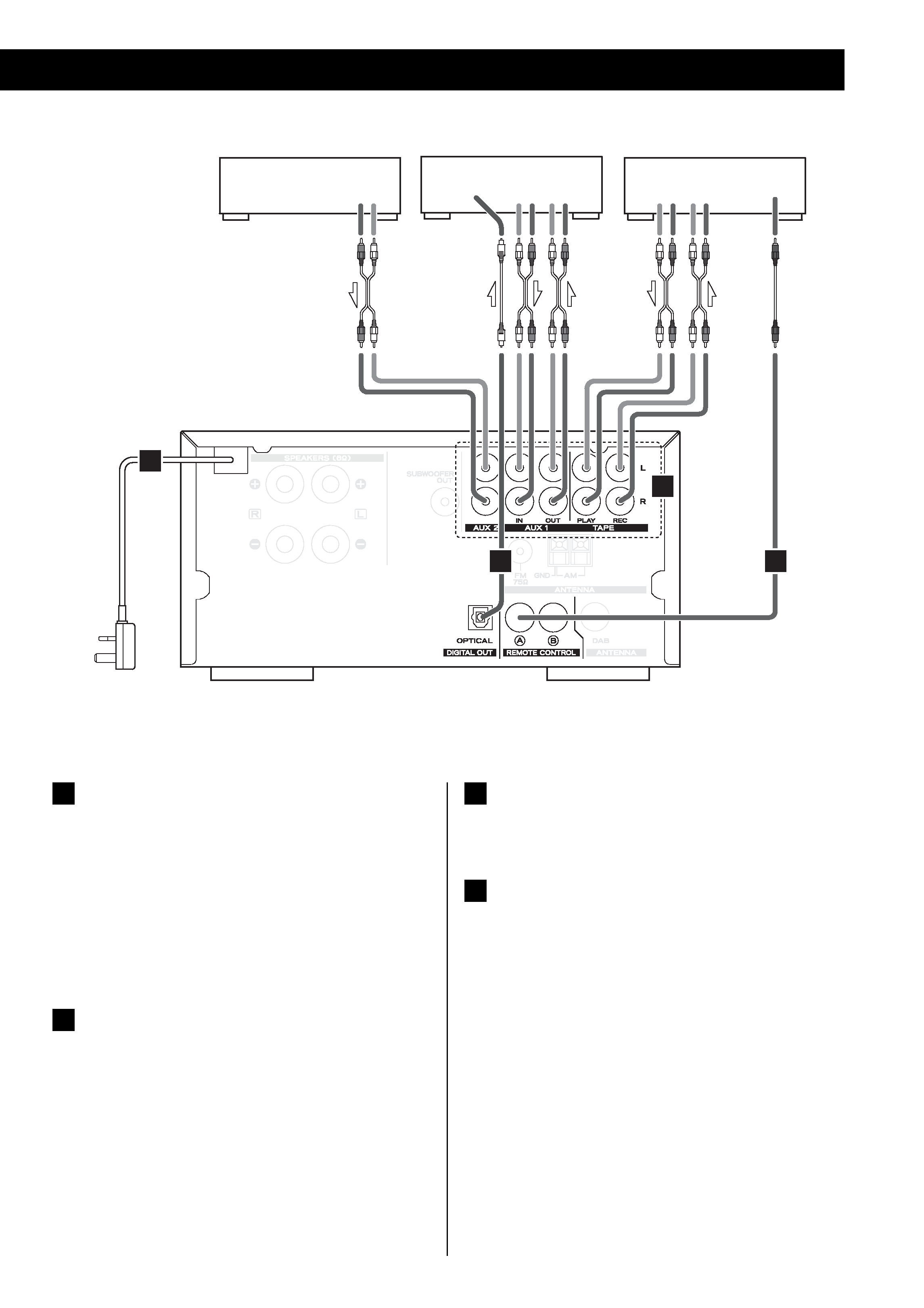
5
REMOTE
CONTROL
C
LINE
OUT
LINE
IN
R
L
R
L
Cassette Deck (R-H300mk
@)
MD, CD-R, etc.
R
L
R
L
LINE
OUT
L
R
VCR, DVD, etc.
F
LINE
OUT
DIGITAL IN
(OPTICAL)
LINE
IN
E
D
AC Power Cord
Plug this AC power cord into an AC wall socket.
REMOTE CONTROL jack
<
You can use the system remote control unit RC-
956 (provided with this unit) to operate TEAC R-
H300mk@.
Connect the REMOTE CONTROL jack (A or B) to
the REMOTE CONTROL jack (A or B) of R-
H300mk@ with the remote control connection
cord.
Note:
The remote control connection cord is not
provided with this unit.
F
E
TAPE/AUX jacks
Make sure to connect:
white plug q white jack (L: left channel)
red plug q red jack (R: right channel)
<
Be sure to insert each plug securely. To prevent
hum and noise, do not bundle the connection
cords with the power cord or speaker cord.
DIGITAL OUT terminal
Connect the component with an optical cable.
DIGITAL OUT w DIGITAL IN (MD, etc.)
<
When inserting the plug of the optical cable, the
protective shutter of the terminal will open and
you should hear it click into position when fully
inserted. Be careful that you do not force the
plug, because this could result in damage to the
protective shutter, the cable, or the unit itself.
D
C
